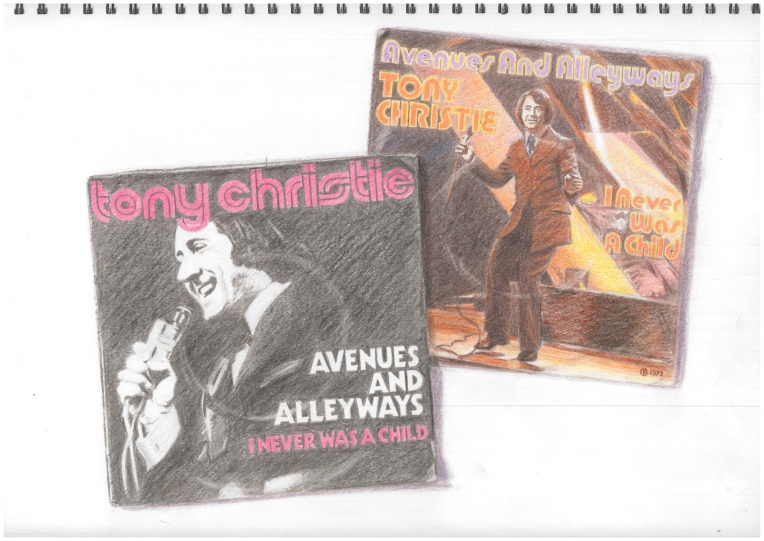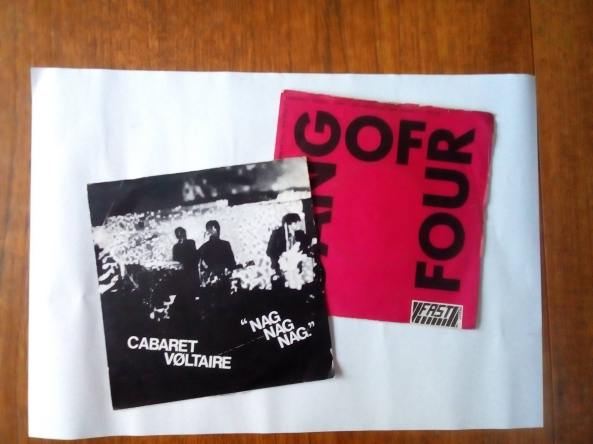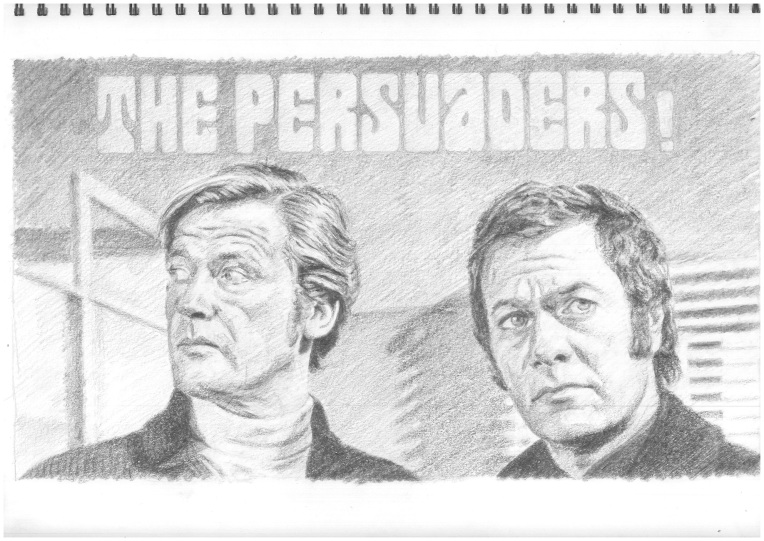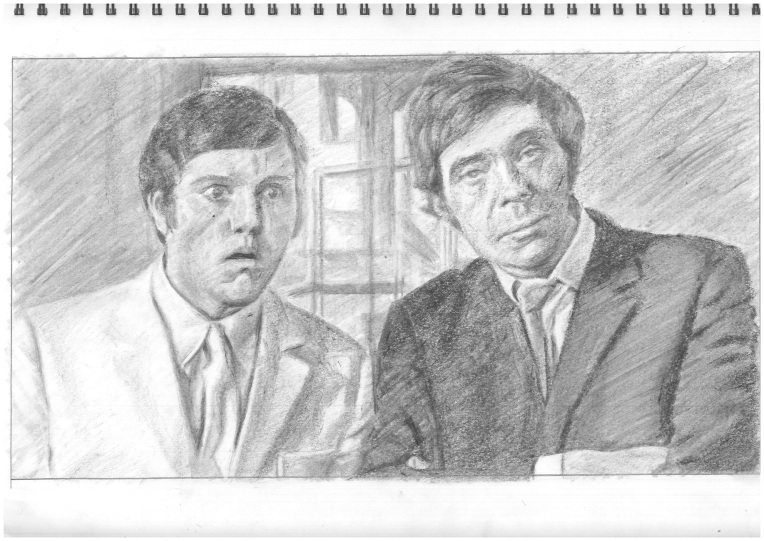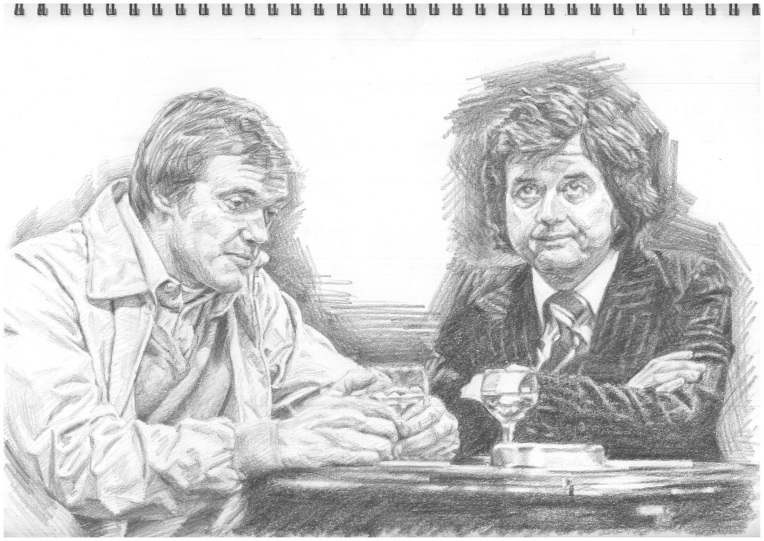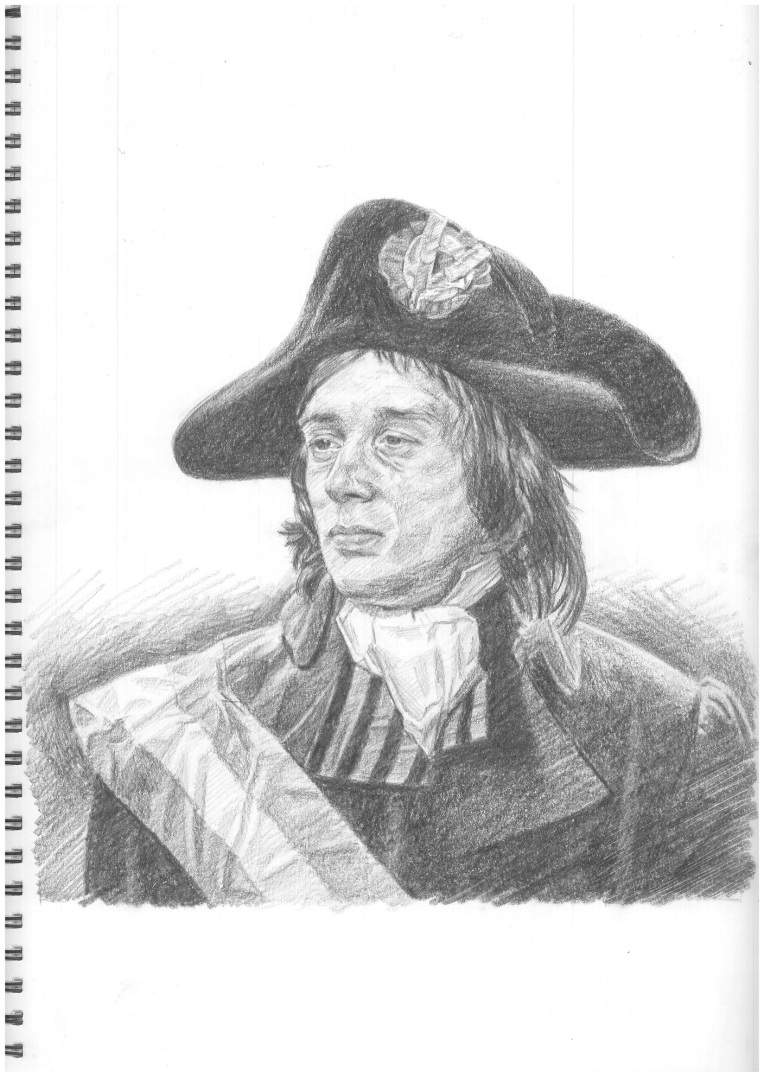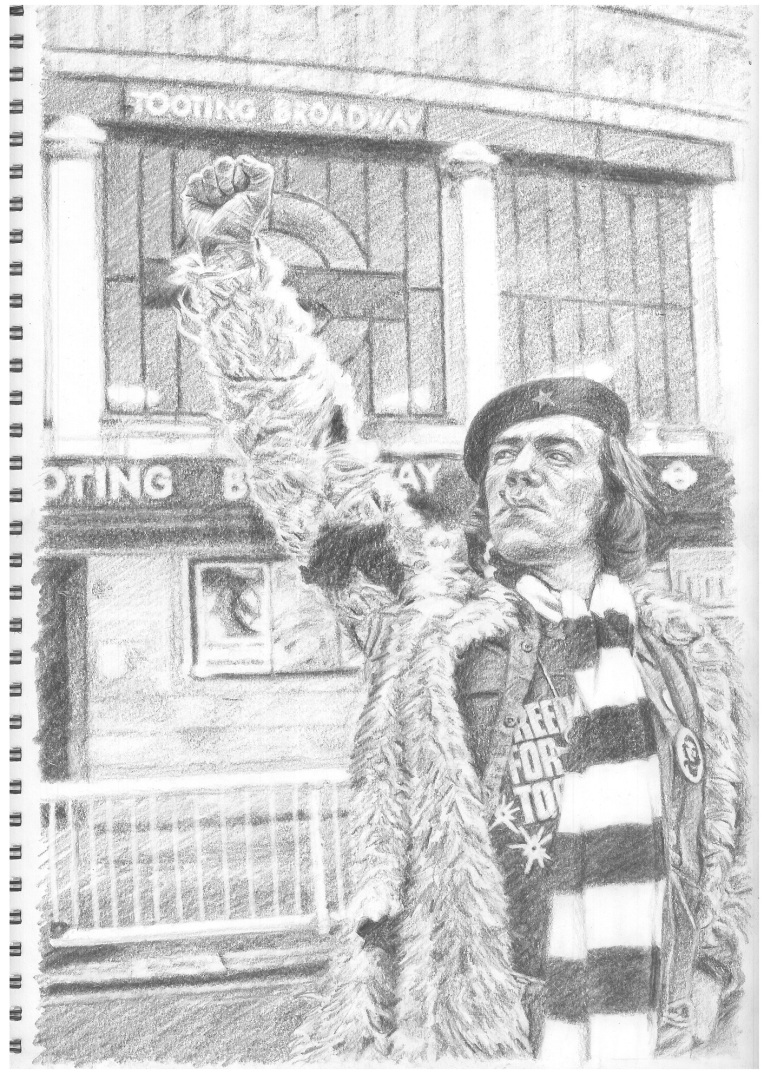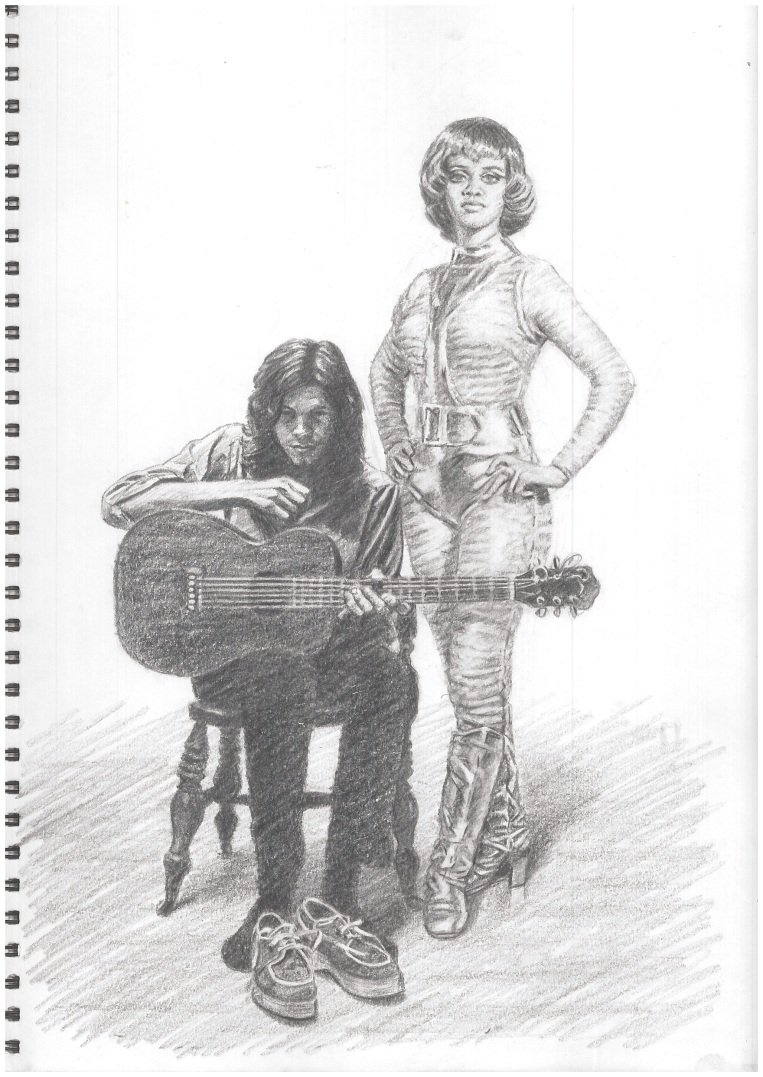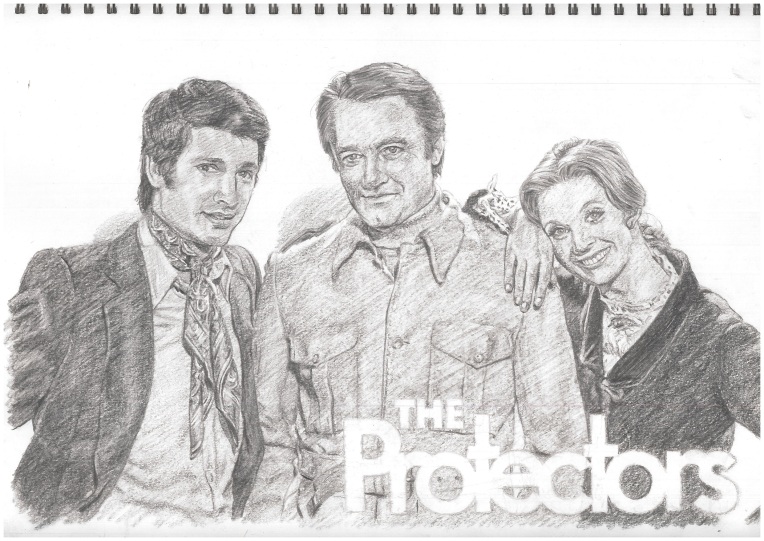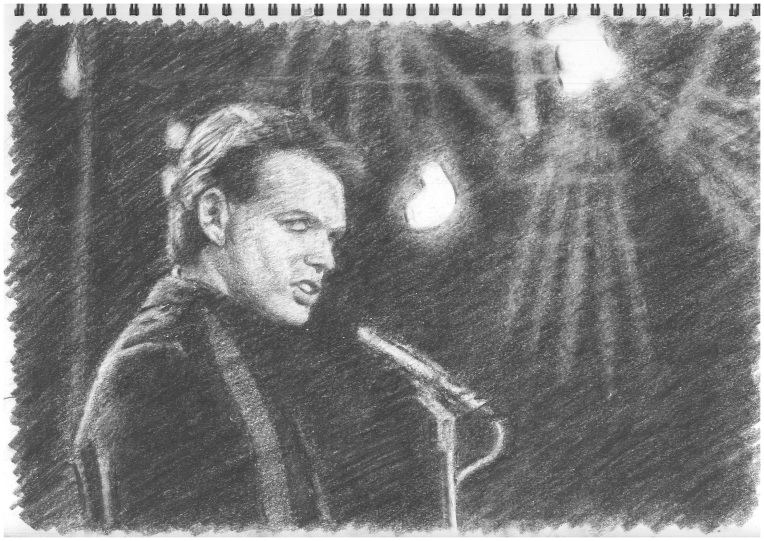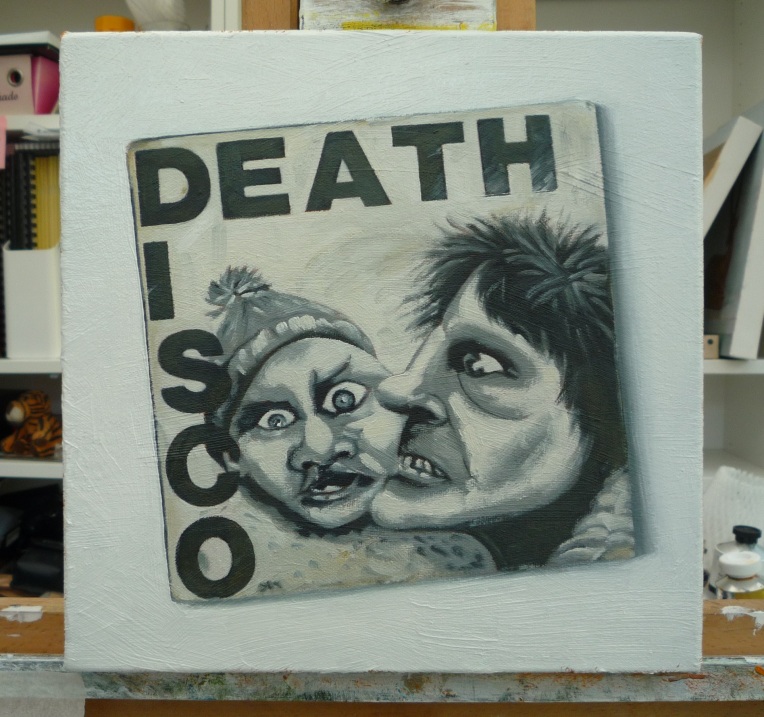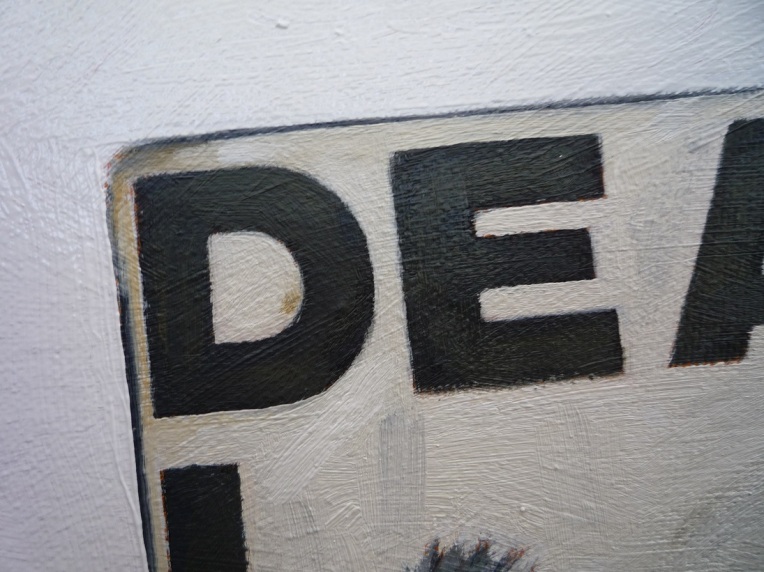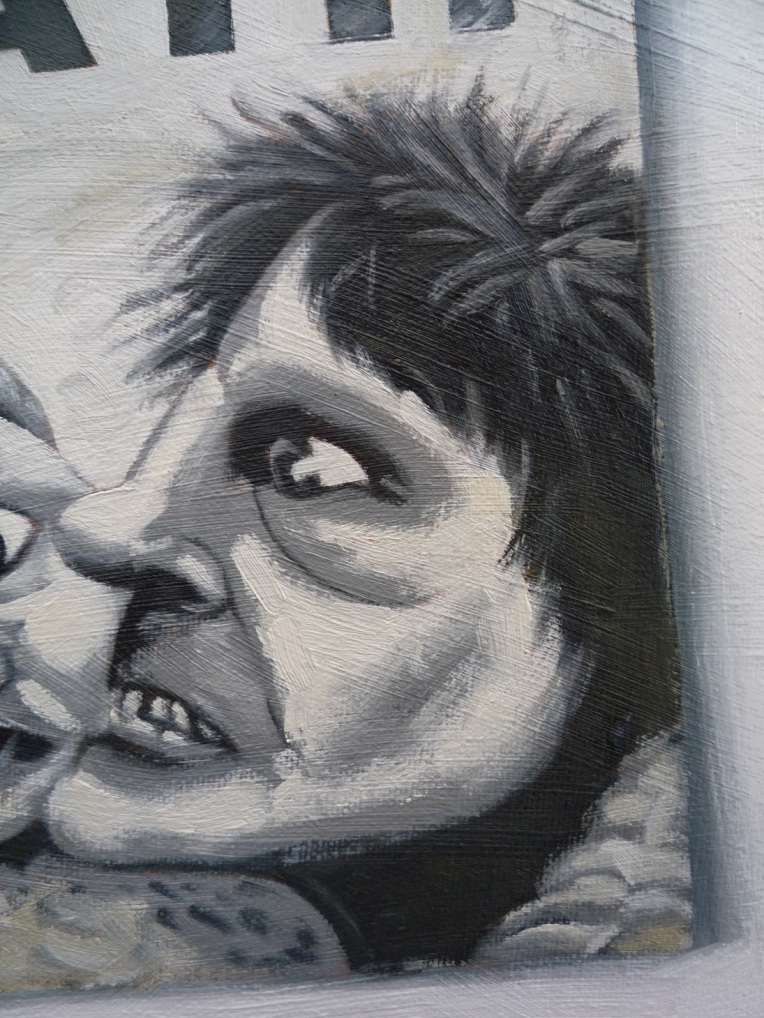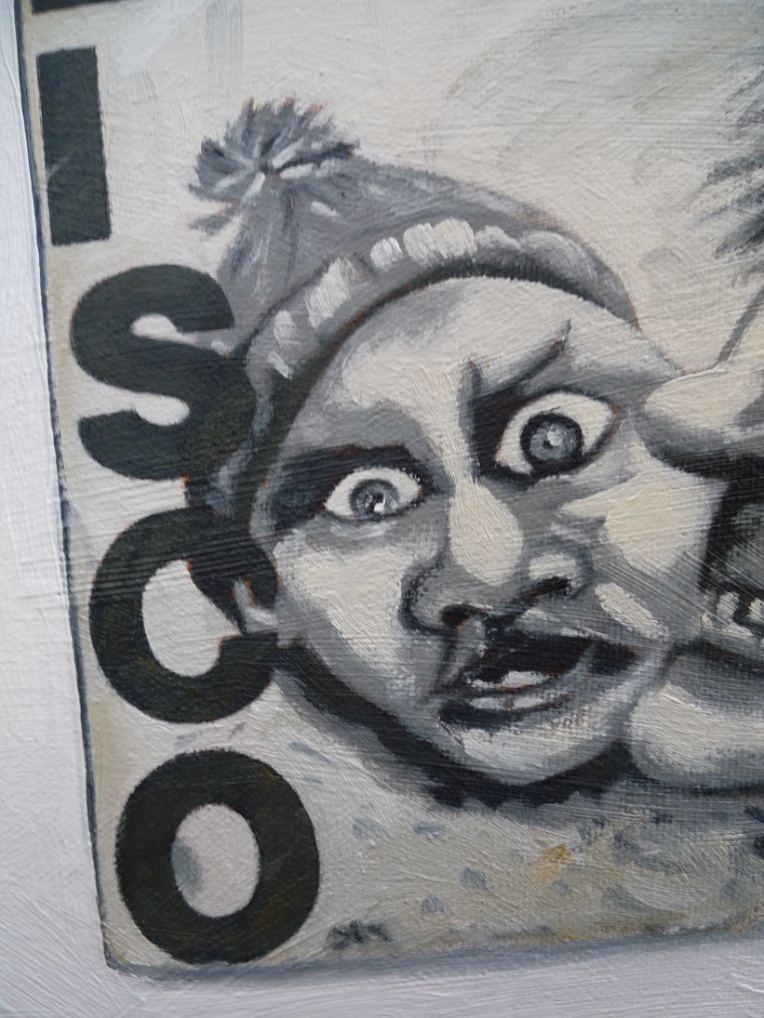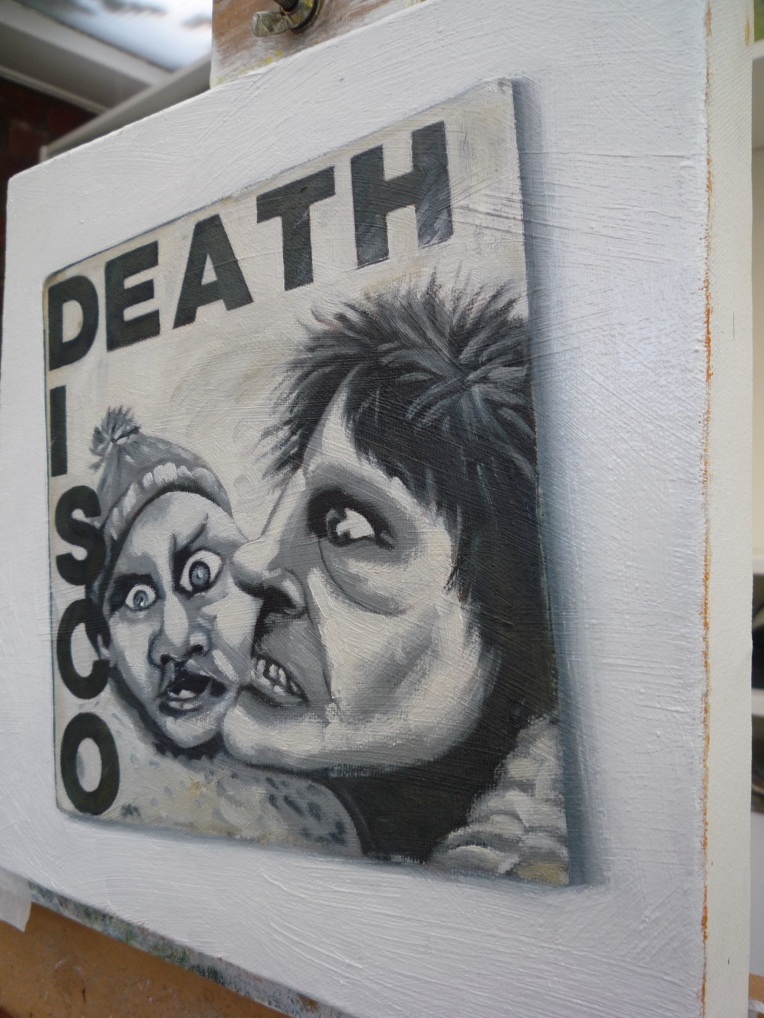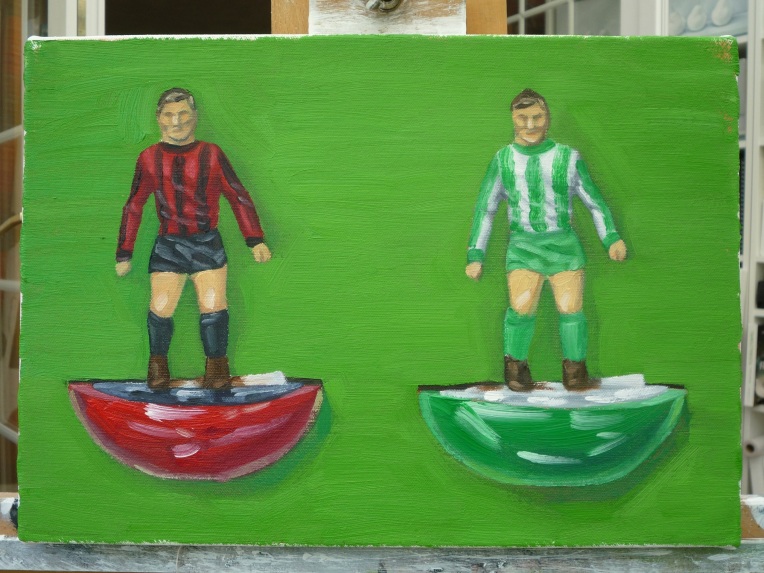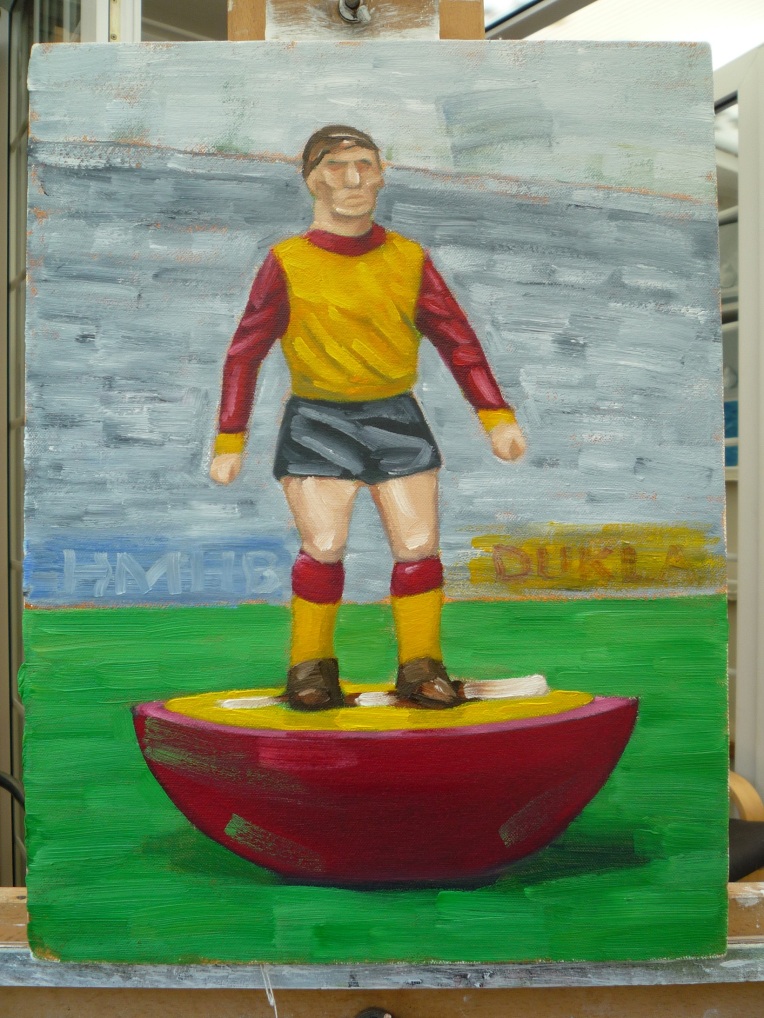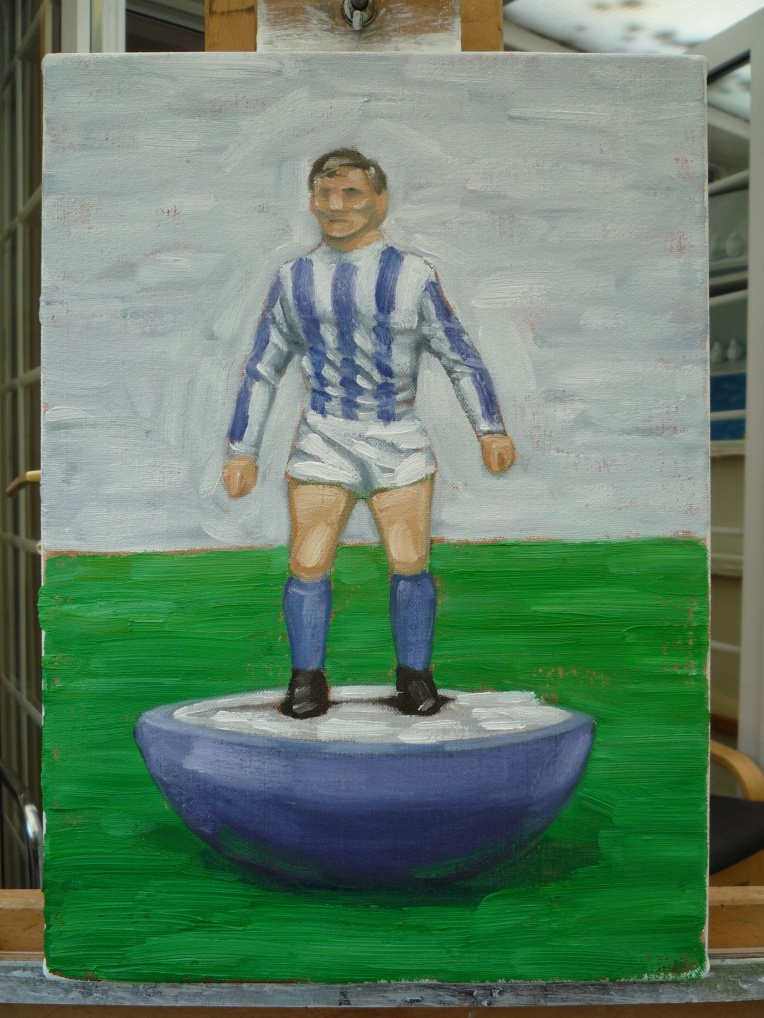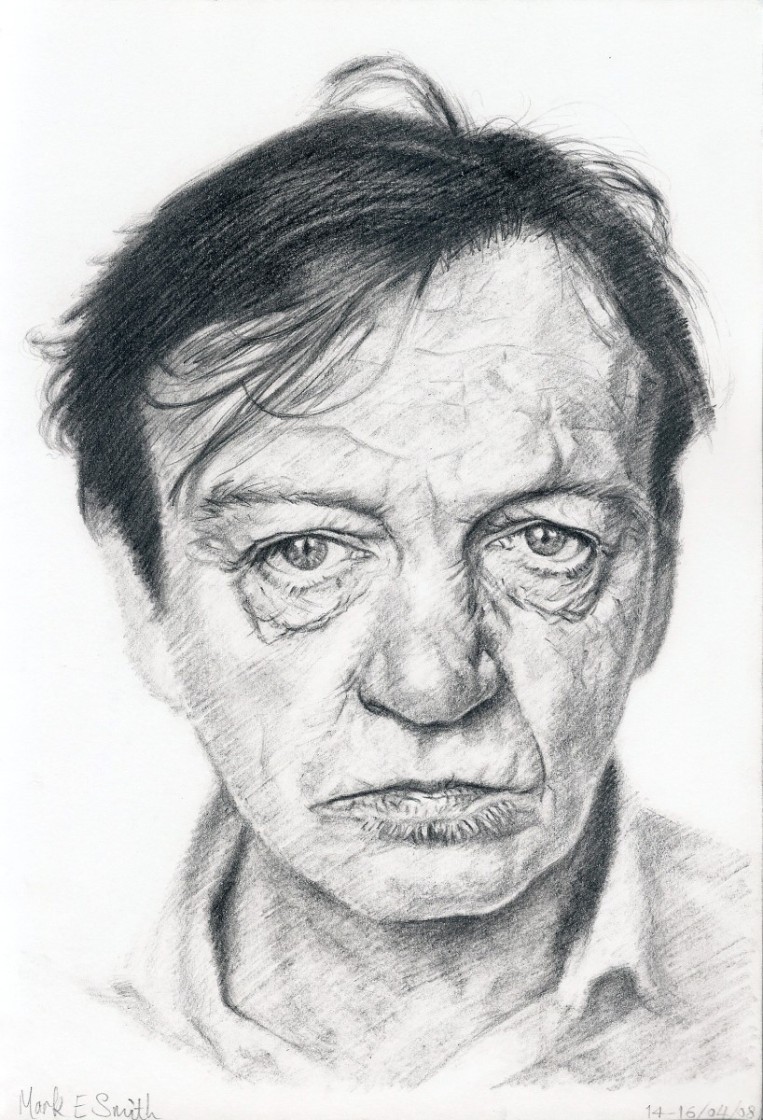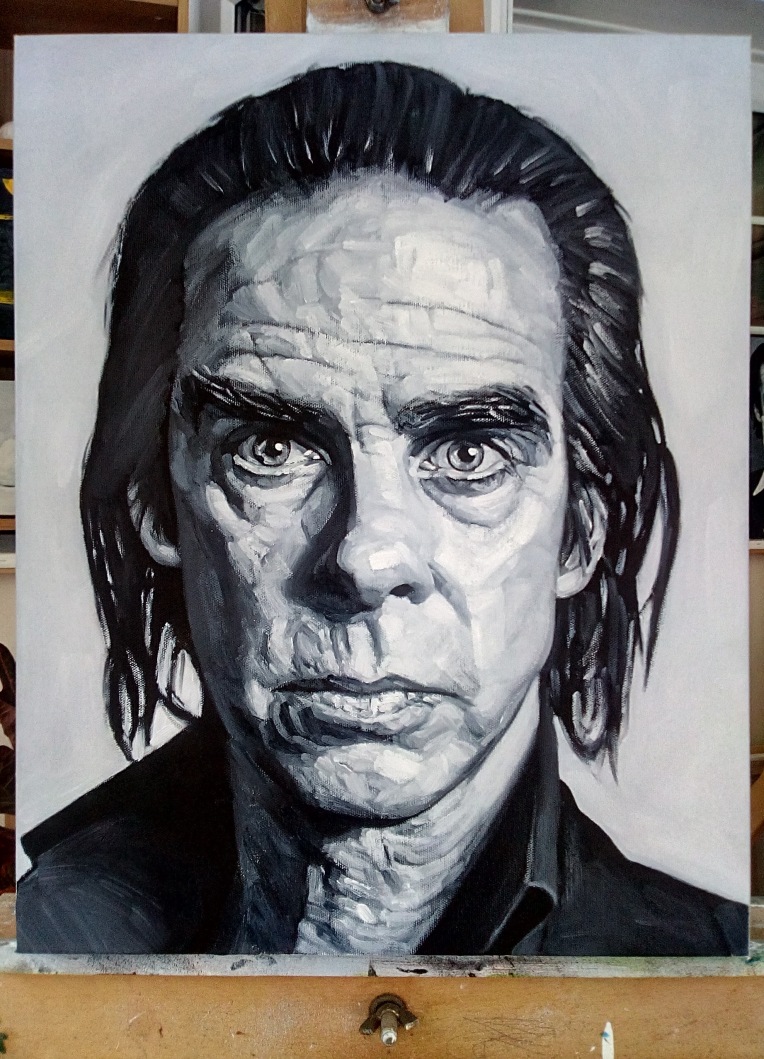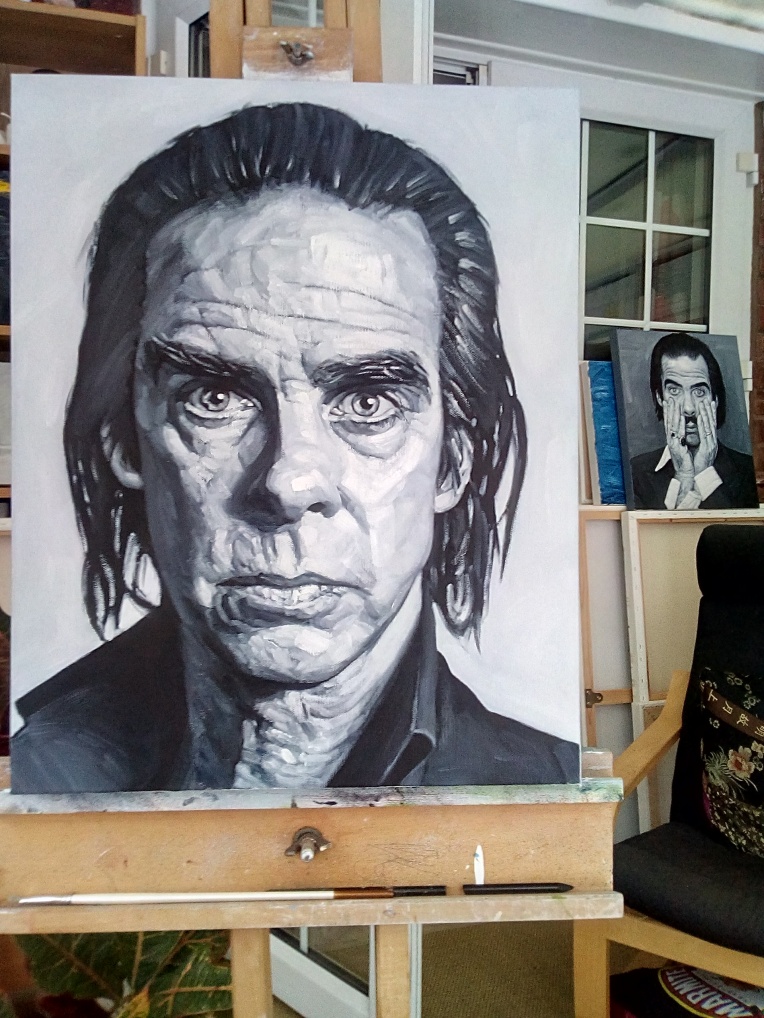The recent absence of blog updates does not mean hands have been idle by any means, and the drawings for the Seventies project have continued at a regular pace as will now be illustrated.
First of all, and continuing with the Northern theme that had been developing within the project, a double portrait drawing – also incidentally incorporating a still life element – from a source image that nostalgically recalls the early evening local television news programme that was broadcast into our homes in the north east corner of Wales, courtesy of the transmitters that brought us Granada TV rather than its Welsh equivalent (for which we required a special aerial adaptor that still proved unreliable). Thus are depicted two of the presenting team of ‘Granada Reports’ in its mid-1970s’ heyday, a young Tony Wilson as apprentice to the legend that was and remains Bob Greaves, with all fashions of the day on display.
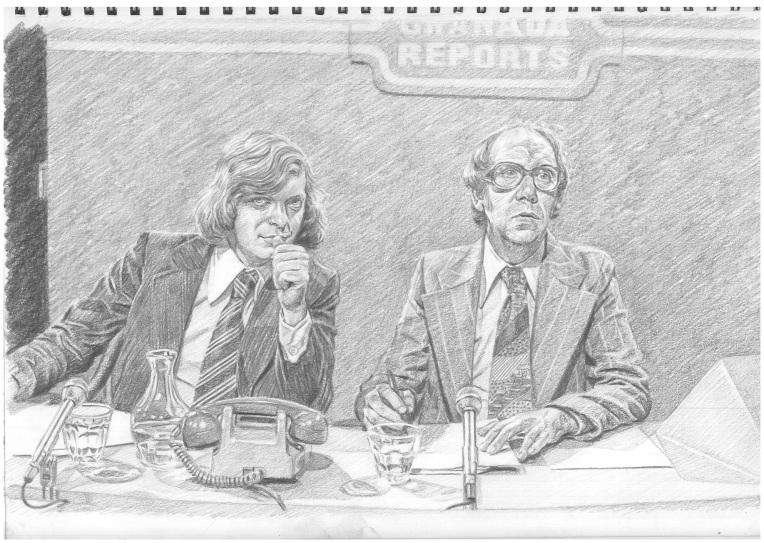
Tony Wilson and Bob Greaves, ‘Granada Reports’ 1970s
graphite and putty eraser on ‘Seawhite’ cartridge paper/42 x 30cm
Next, the hip, young cultural gunslinger Tony Wilson is his other contemporary television presenting guise as more casually-attired host of ‘So It Goes’, introducing new music to the north west region, including a selection of the punk and post-punk bands from Manchester and environs that had been formed and developed in the wake of the Sex Pistols’ legendary appearances in the city in 1976. As ‘So It Goes’ fell victim to a notorious appearance by Iggy Pop at the conclusion of its second series, so Tony Wilson’s dissemination of the new sounds found other outlets, within ‘Granada Reports’ and also, of course, with the founding of Factory Records, both of which came to feature Joy Division as they grew and became such an icon of the time and place, and proceeded to transcend both as they remain synonymous with.
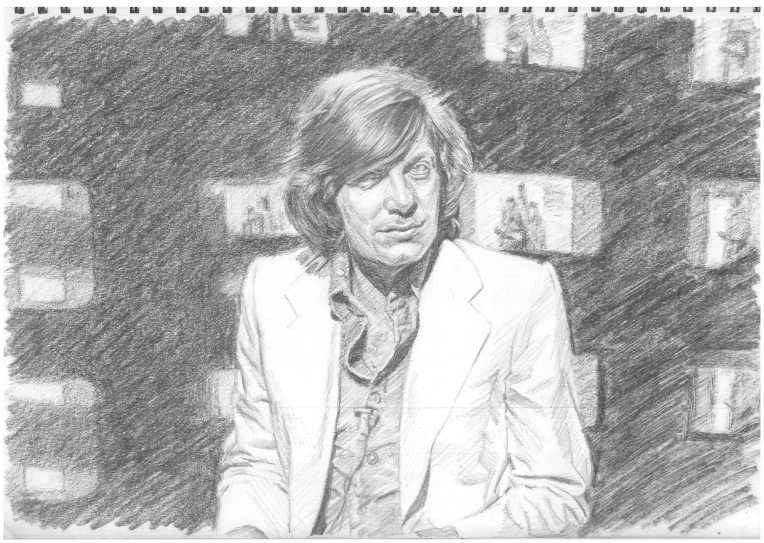
Tony Wilson, ‘So It Goes’
graphite and putty eraser on ‘Seawhite’ cartridge paper/42 x 30cm
The recently-published volume of Paul Slattery’s photographic record of Joy Division at Strawberry Studios and around the town of Stockport on 28th July, 1979, features the source image for this drawing on its cover. ‘Here are the young men’ indeed, but creating some of the most powerful and resonant music of the era. If I’m absolutely honest, I didn’t acquire my first Joy Division record, the ‘Transmission’/’Novelty’ 7” single, until the February of 1980, after which obsession took hold, but the seeds of my devotion to them had undoubtedly been sown in my soul during the previous autumn, via the auspices of the John Peel radio programme (of course), so their inclusion in the project is entirely appropriate.
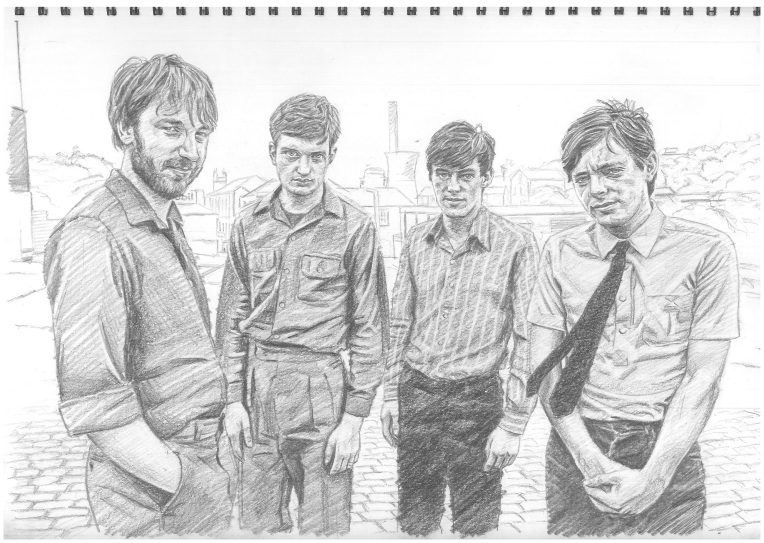
Joy Division after a Paul Slattery photograph
graphite and putty eraser on ‘Seawhite’ cartridge paper/42 x 30cm
More musicians pictured standing (and squatting) around can be found on the cover of The Stranglers’ (my very favourite group of the time) ‘Black and White’ LP, and this image, along with the band’s iconic logo, that I would have drawn/copied often then, forms the content of the next drawing which, in effect, illustrates one of the three music albums that I received as presents for Christmas 1979 (so we’re really pushing at the limits of the Seventies here!).
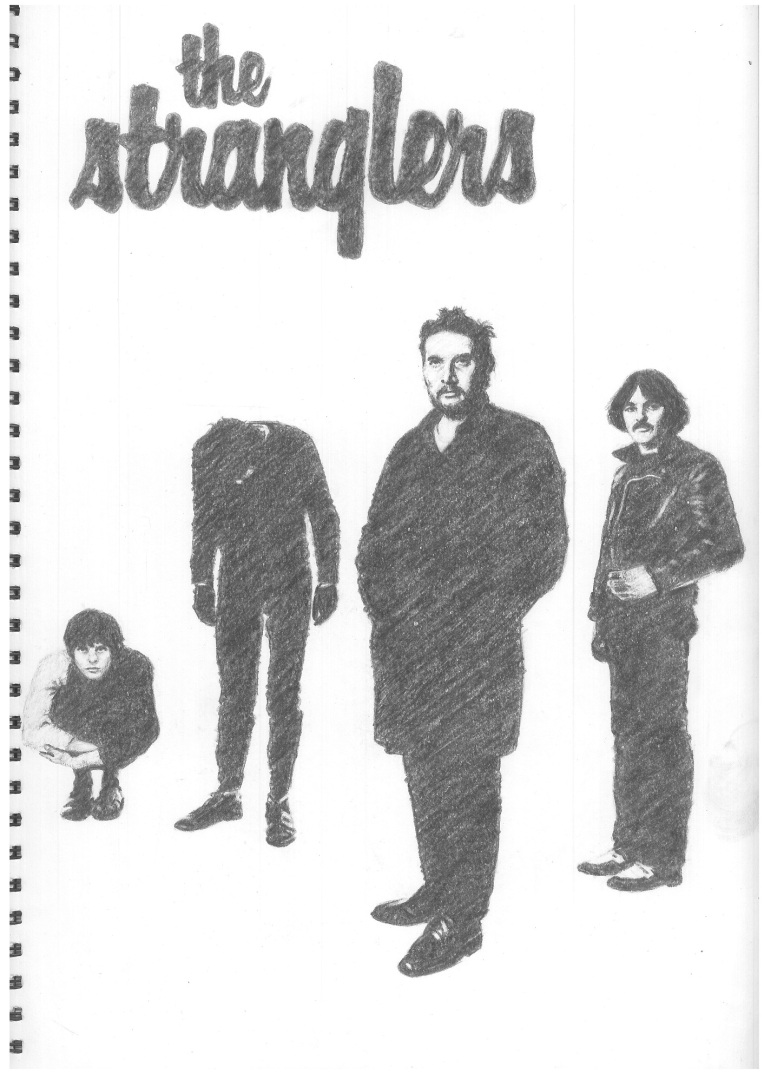
The Stranglers ‘Black and White’
graphite and putty eraser on ‘Seawhite’ cartridge paper/30 x 42cm
The others were Public Image Ltd’s ‘Metal Box’, originally released as a collection of three 12” vinyl EPs contained within a tin canister (as very sadly I no longer own this object of desire, the substitute utilised as the model for this still life is in fact the reduced-circumstances and feeble impostor CD-sized version of the can, but I’d like to feel the spirit of the original can be inferred from the representation) – I have blogged about this on a previous occasion – and The Clash’s masterpiece double LP, ‘London Calling’, the front cover of which is faithfully reproduced in pencil here. In time, one learnt of the genesis of the latter artefact’s design, by Ray Lowry, in the artwork accompanying Elvis Presley’s debut album, and of such concepts and practices as artistic influence and postmodern ‘appropriation’, but I’m sure that wasn’t of particular concern to my 1979 self!
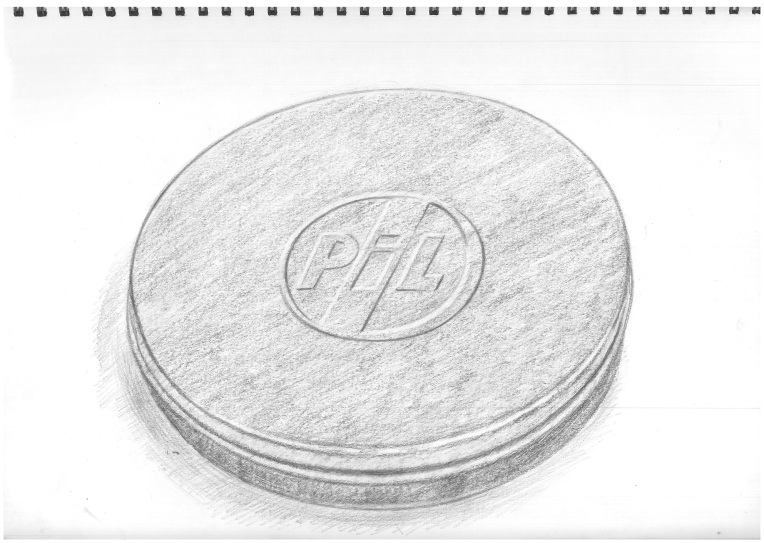
‘Metal Box’
graphite and putty eraser on ‘Seawhite’ cartridge paper/42 x 30cm

‘London Calling’ LP sleeve (front)
graphite and putty eraser on ‘Seawhite’ cartridge paper/30 x 42cm
